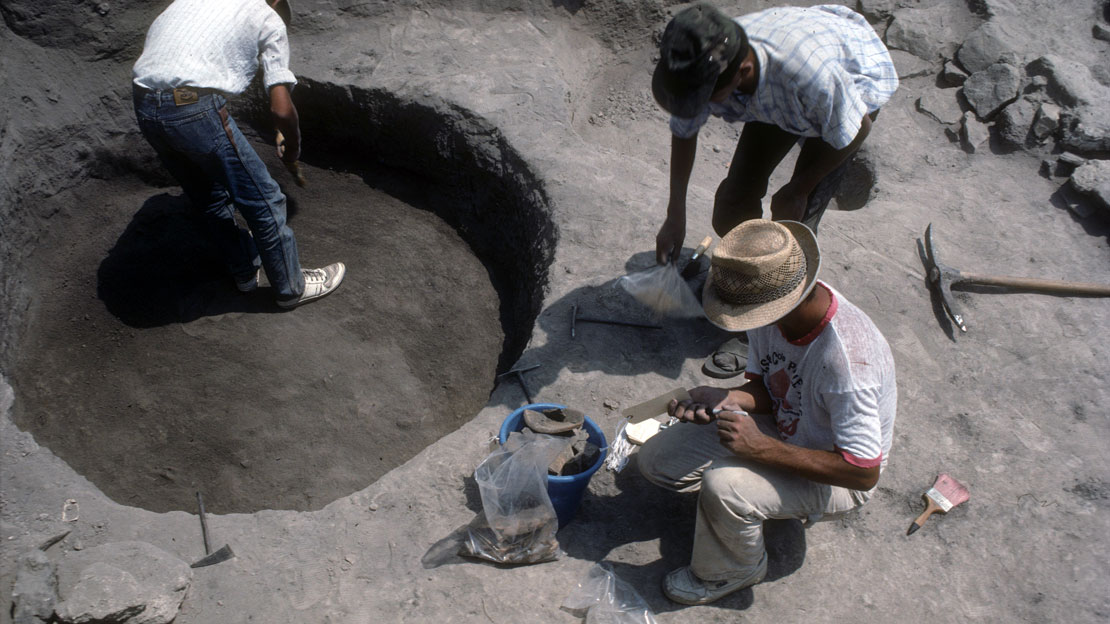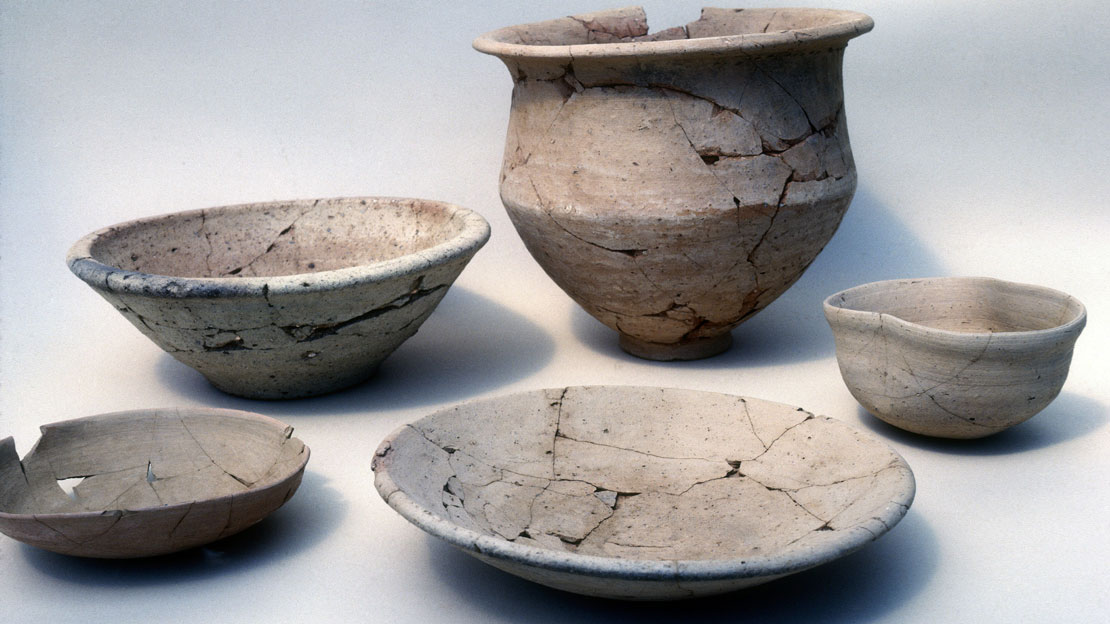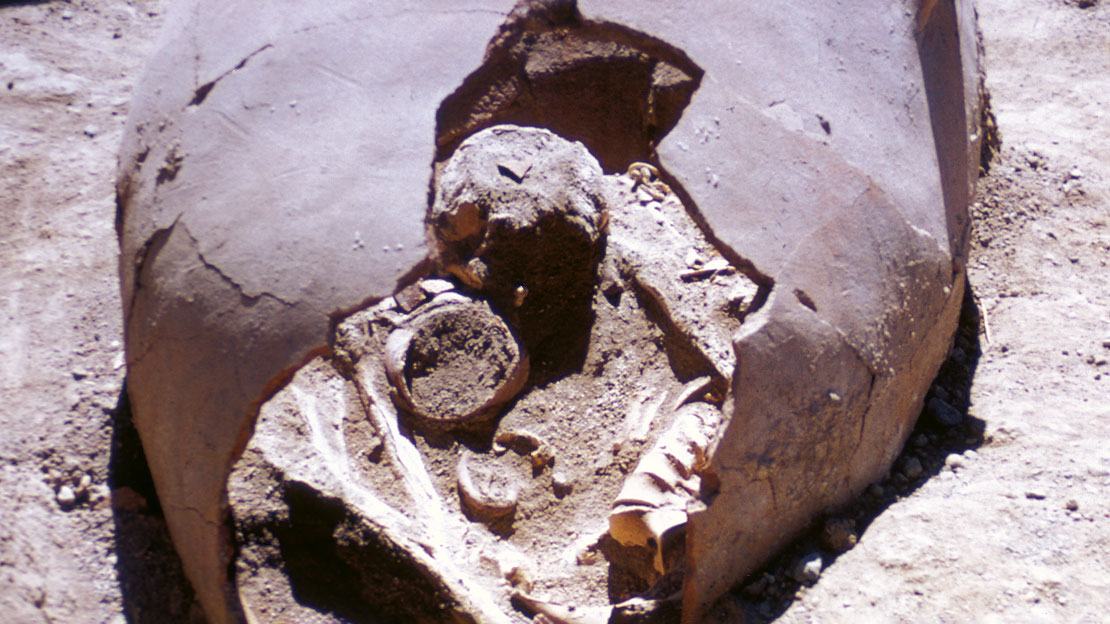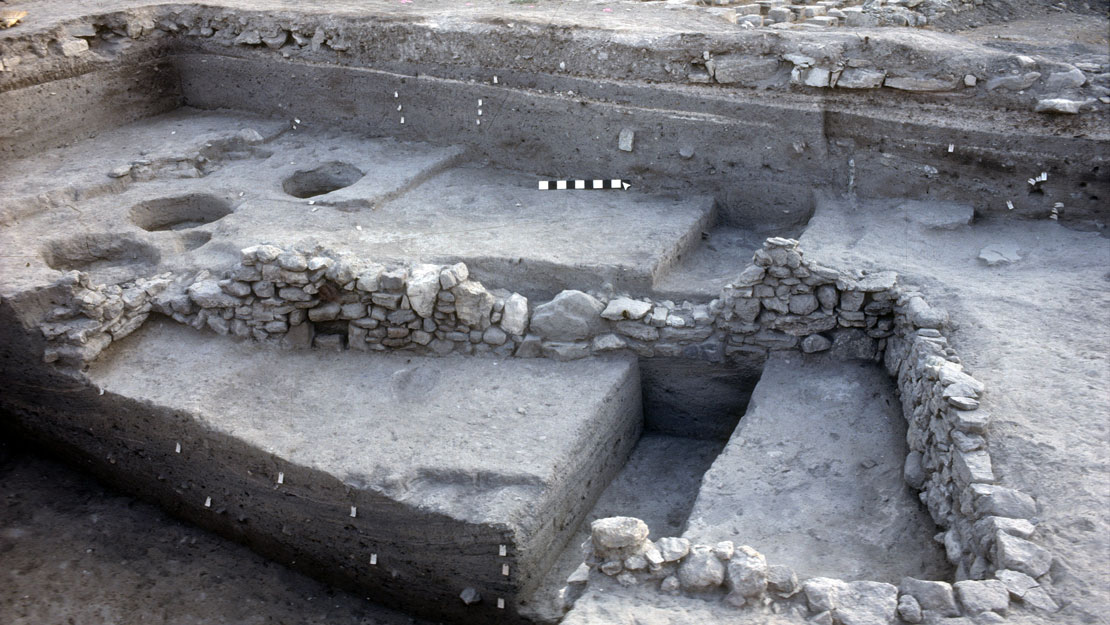Bronze Age Gordion

Relatively little is known about the Bronze Age at Gordion, primarily because of overlying monumental buildings of the Phrygian Iron Age period. The site was certainly occupied early in the Bronze Age (from ca. 2500 BCE) and there is no clear change in habitation until the Early Iron Age (ca. 1100 BCE). Most of the Bronze Age material has been excavated in three deep soundings on the Citadel Mound and in an extramural cemetery on the natural ridge to the northeast of the mound.
The earliest evidence for settlement comes from the cemetery: a cist grave (under Tumulus F) and a simple inhumation (H28, within the main cemetery) which yielded handmade pottery typical of the EB I (Early Bronze Age I) period. The later Early Bronze Age levels were encountered in two of the three deep soundings on the Citadel Mound. As these soundings cover a very limited area, the nature of Early Bronze Age settlement on the mound cannot be ascertained with certainty, but excavation has yielded buildings with stone foundations and a mudbrick superstructure. By the end of EB II or EB IIIa, Gordion seems to have been part of a regional ceramic culture with very close ties to Polatlı and Asarcık Höyük. Some features of the pottery can be paralleled as far away as southwestern Anatolia, e.g. Beycesultan and Aphrodisias.
During the EB IIIb period Gordion appears to have forged some ties with regions further to the east, on the central Anatolian Plateau, where common ceramic traits can be found at Ahlatlıbel and Etiyokuşu in the Ankara region, and Boğazköy and Alaça Höyük in the Çorum region. Toward the end of the Early Bronze Age, Gordion formed part of a chain linking western Anatolian settlements such as Troy with southern settlements like Tarsus in Cilicia. There is some evidence that Early Bronze Age Gordion was severely damaged by a conflagration.


Although the transition from Early to Middle Bronze Age is not as clear as one would like, there appears to have been no lengthy hiatus following the destruction of the EB IIIb settlement. The MB I–II (Middle Bronze Age I–II) period is characterized by wheelmade, red-slipped, highly burnished ‘Hittite’ type pottery that differs significantly from earlier ceramic traditions. This pottery sequence is well represented within the central and central-west Anatolian tradition, especially at Polatlı, Beycesultan V, and Boğazköy-Hattuša.
The MB III period corresponds with the rise of the Old Assyrian Trading Colony Period in Anatolia, wherein power centers in Anatolia established strong commercial connections with their Assyrian neighbors, trading primarily silver in return for tin and textiles from Assyria. The Assyrian merchants established Anatolian enclaves called karums where they settled in large numbers. Although Gordion’s MB III pottery exhibits similarities to the ceramics of known karum sites such as Kültepe and Boğazköy, the relative lack of eastern imports at MB III Gordion suggests that the settlement was never an important node on the main trade routes between central Anatolia and north Syria.
During the MB IV period, when the Hittite Kingdom began to be established, Gordion’s cultural ties to the central Anatolian plateau grew even stronger. The discovery of a bulla with Hittite hieroglyphic script has suggested to some that Gordion was using an administrative system similar to that of the Hittites. The extramural cemetery belongs primarily to the MB III–IV periods. The burials include simple inhumations, cist-graves, and pithos-graves (burials in large storage jars), with the latter in the majority. The burial gifts consist of only a few vessels and personal items, which one might ascribe to poverty, but such simple assemblages were common in Anatolian burials of the third and second millennia, with the exception of the Alaça Höyük royal burials. The pithoi themselves were presumably expensive items. Cremation burials are characteristic of central Anatolia during this period, yet they are absent in the Gordion cemetery. Excavations at nearby Ilıca, however, have also yielded cremation burials, suggesting this may have been a frontier region with funerary customs that lay outside the norm.
Gordion apparently escaped the destructions and abandonment evinced by other central Anatolian sites at the end of the Old Kingdom period, perhaps due to its position at the western frontier of the Hittite Kingdom.

During the Late Bronze Age, Gordion fully entered the political and cultural orbit of the Hittite Kingdom. From the textual archives unearthed at Boğazköy-Hattuša, Hittite kings are known to have periodically campaigned to the west, and their preferred route involved crossing the Sehiriya River (Sangarios/Sakarya River) near Gordion. The rock reliefs at Gavurkalesi near Haymana, southeast of Gordion, and at Yağrı, to the southwest, also clearly indicate Hittite hegemony. Gordion’s ceramics are easily paralleled in other settlements on the central Anatolian Plateau, such as Boğazköy-Hattuša, Alişar, Maşat, and Alaça Höyük, but similarities are also apparent as far away as Tarsus, Korucutepe and Beycesultan, undoubtedly due to Hittite expansion in these areas.
Further reading
- Gunter, A. C. 2006. “Issues in Hittite Ceramic Production: A View from the Western Frontier,” in Struktierung und Datierung in der hetitischen Archäologie: Voraussetzungen, Probleme, neue Ansätze, ed. D. P. Mileke, U.-D. Schoop and J. Seeher, Istanbul, pp. 349-363.
- Gunter, A. C. 1991. Gordion Excavations Final Reports III: The Bronze Age, Philadelphia.
- Henrickson, R. C. 1995. “Hittite Potters and Pottery: The View from Late Bronze Age Gordion,” Biblical Archaeology 58(2), pp. 82-90.
- Mellink, M. J. 1956. A Hittite Cemetery at Gordion, Philadelphia.

